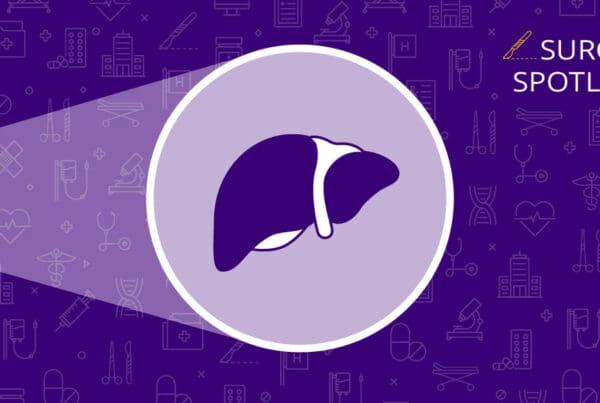Highlights | Culturally competent and bilingual care
- The Latinx Diabetes Clinic cares for Hispanic and Latinx patients with diabetes or prediabetes.
Providers speak Spanish and understand cultural differences. - Hispanic and Latinx people are at higher risk for diabetes and complications from it.
- The clinic team seeks to make care accessible, address healthcare disparities, outreach to the community and educate medical students and trainees.
In 2020, the Latinx Diabetes Clinic opened at UW Medicine’s South Lake Union campus to serve the growing number of people who identify as Hispanic, Latino/a or Latinx who have diabetes or prediabetes.
The clinic, which is part of the Diabetes Institute, also serves as a center of excellence for diabetes research and education for medical students and trainees on providing culturally competent care.
Providing culturally competent care
Healthcare can be a daunting experience for any patient, and for Latinx patients who face a language barrier and cultural differences, it can be even more challenging.
Having providers who don’t speak their language affects how much a patient understands about their own care, may cause them not to ask questions or voice concerns and makes it more likely that miscommunication will happen. Research shows that when patients have providers who speak their language, they are more likely to follow the provider’s recommendations and return for ongoing care.
Lorena Alarcon-Casas Wright, MD, an endocrinologist and director of the Latinx Diabetes Clinic, has seen this firsthand with patients — like the time a patient who had been discharged from the hospital and came for an outpatient follow-up visit, asked Wright why they had been in the hospital.
“I don’t need an interpreter when I see patients who speak Spanish, which makes patients feel more comfortable. I migrated to the U.S. from Mexico as an adult, so I understand the culture, beliefs and traditions and what kind of questions to ask. That creates a bond and I feel patients trust me. My patients remind me of my family back in Mexico,” she says.
Other providers Leo Morales, MD, an internal medicine specialist; Melissa Montalto, a nutritionist and certified diabetes educator; Melody Godinez, a medical assistant who takes the patients’ vitals and gets them ready for their visit with their providers; and the patient services specialists who coordinate a patient’s care, such as appointments, referrals and directions to the clinic, and make sure they have access to the resources they need. All of these providers speak Spanish.
“My goal is to be a strong advocate for patients, giving them resources, helping them feel more at ease, once they get here making the clinic feel welcoming, communicating in their language and being a point of contact for anything they need, so they feel comfortable and can ask for help,” says Rhonda Rodriguez, a patient services specialist for the clinic.
“Helping Spanish-speaking patients with diabetes is hugely rewarding,” Morales says. “So many have told me they are so happy to find a doctor who speaks Spanish. I think they feel freer to say what concerns them when they find a doctor who understands them in their primary language. There is also a cultural connection we make, coming from a Spanish-speaking country and having lived the immigrant experience in the United States.”
Addressing healthcare disparities
Latinx people are at higher risk for developing diabetes and prediabetes plus complications from the disease, such as kidney failure, limb amputations and vision loss.
“At the root of the higher risk of diabetes experienced by Latinx patients are the social determinants of health, including access to high-quality care, healthy food and living environments, high-quality housing and education, and more,” Morales says. “Adversity faced by Latinx individuals over their life course accounts for higher rates of diabetes and worse outcomes of care.”
Wright notes that there is a high rate of no-shows among Latinx patients at appointments at other clinics. No-shows are typically multifactorial, such as accessing transportation.
“At the Latinx Diabetes Clinic, we aim to address that barrier and our clinic has a lower no-show rate,” she says.
The clinic is located in South Lake Union where there is easy access by public transportation. It is part of the Diabetes Institute, where the Retina Center is located. It houses a range of services, including cardiology, nephrology, psychiatry and psychology, primary care, laboratory services and a pharmacy all in the same building. This is convenient for patients who have complications, which can happen when someone has diabetes that hasn’t been controlled.
Rodriguez and clinic manager Cricket McCleary recently helped institute an extension to a financial assistance program many patients use that covers their medical costs. Instead of lasting just three months, as it originally did, the program now lasts six months.
“It’s great we are able to provide those services because with diabetes care there is continuous follow-up, so this makes the whole process easier,” Rodriguez says.
When the team is invited to community events, they outreach to community members to help spread the word about the clinic. They hold a monthly caseload sharing program with UW Medicine Primary Care clinics in Kent-Des Moines and Federal Way where there are large Latinx populations. And the team helps educate primary care providers at local community clinics on how to manage patients with complex diabetes.
The team’s dream would be to launch satellite clinics in the south end to make care more accessible for patients in that area. They recently launched a study in partnership with the Latino Center for Health and the Allen Institute to learn more about post-COVID-19 outcomes among Latinx patients across the state.
Other important community outreach efforts for Latinx patients living with diabetes include a culturally tailored diabetes education intervention in partnership with Sea Mar Community Health Centers and supported by the American Diabetes Association.
“Our ultimate goal is that patients do better and that their outcomes are not as grim as they are right now,” Wright says. “We provide education at every single visit so patients learn about their diabetes and hopefully share that information with their families. We hope to create more awareness of healthcare disparities and how they contribute to health and illness. We hope our clinic to serves as a model not just for the Latinx population but for other underserved communities.”



